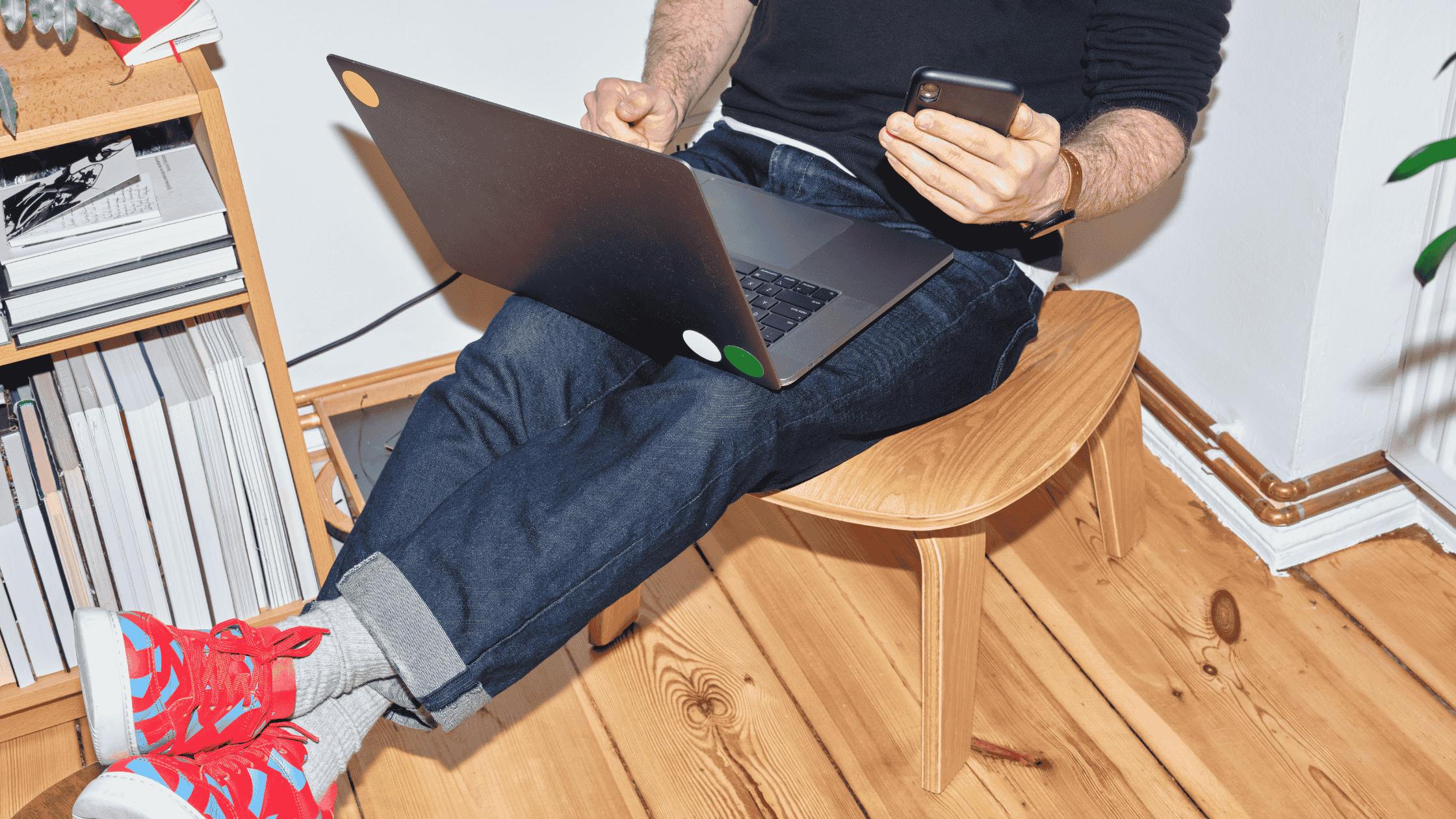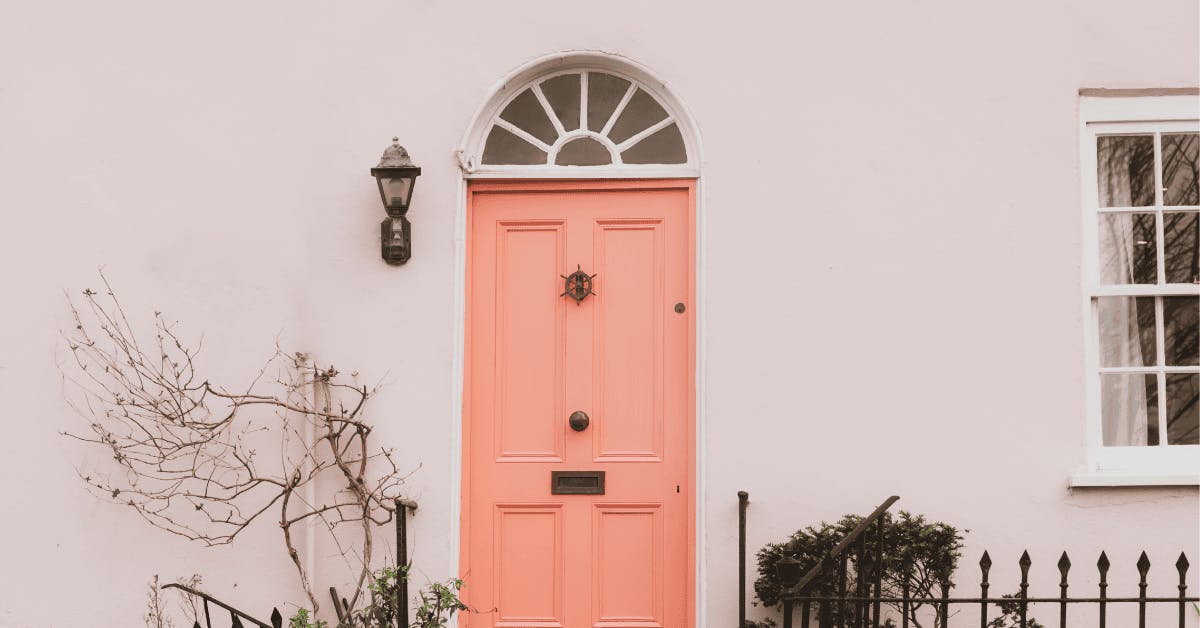7 Financial red flags that mean you’re not ready to buy a house yet (and how to fix them)
You’ve been saving a deposit, dreaming of the day you can hang pictures on the wall, and your TikTok algorithm thinks you’re in the market for a sofa. But are you actually ready to buy a house yet?
When buying your first home, the deposit is just one piece of the puzzle. If you’re missing the other pieces, you might not be ready to buy a house just yet.
So today, let’s take a look at the 7 financial red flags that could be standing between you and your dream home, and more importantly, how to fix them.
Tembo does not provide financial advice. The content below is intended as general advice. If you need advice specific to your individual situation, please consult a professional financial advisor.
See your true buying budget without applying
With a personalised Tembo plan, you can see all the ways you could get on the ladder, including indicative interest rates and repayments - all without applying.

1. Your credit score is a mystery
Your credit score plays an important role when buying your own home, as it gives lenders an insight into how well you manage credit. The higher your score, the easier it is (usually) to get a mortgage. You also may have access to more competitive interest rates, provided you meet lenders’ affordability criteria.
You can still get a mortgage with a low credit score, but you’ll have fewer choices and you may be offered a less competitive rate.
If you don’t know what your credit score is or how it works, this could be a sign you’re not quite ready to buy a house yet
How to fix it
- Check your credit report using CheckMyFile to see your credit history across the three main credit agencies instead of one - Experian, Equifax and TransUnion.
- Fix any errors or outdated info.
- Make sure you’re on the electoral roll at your current address.
- Keep credit card balances low and pay bills on time.
Learn more: Is now a good time to buy a house?
2. You’ve got unmanageable high-interest debts
It’s hard to get excited about homeownership when your credit card bill is giving you nightmares. If you’re struggling to make even the minimum payments or your overdraft is permanently maxed out, this could be a sign you’re not quite ready to take on a mortgage just yet.
Mortgage lenders will take a close look at your existing debts when deciding how much they’re willing to lend. Big, high-interest debts can hurt your credit score and reduce your affordability, meaning you may be offered a much smaller mortgage than you need.
If you do get approved, you’ll need to factor your new mortgage payments into your budget. If you’re already feeling stressed and struggling to pay off your debts, adding a mortgage to the equation might make things even harder.
How to fix it:
- Make paying down high-interest debts your top priority
- Consider consolidating multiple debts into a single loan with a lower interest rate to make repayments more manageable
- Review your budget for regular expenses you can cut or reduce to free up extra money for repayments.
- Talk to your creditors about setting up a repayment plan. They might even be able to reduce your interest rates
Learn more: How much deposit do I need for a house?

3. Your income is unreliable
When you apply for a mortgage, one of the first things the lender will look at is your income. They’ll want to see that it’s regular and reliable so that you can comfortably keep up with your mortgage payments.
This doesn’t mean you need a traditional 9 to 5 job to buy a house (we’ve helped plenty of self-employed people to get a mortgage) but you may need to jump through a few more hoops than you would if you were employed.
How to fix it:
- Build up at least 2–3 years of accounts or tax returns if you’re self-employed. This helps show your income is consistent over time.
- Running a limited company? Consider paying yourself a regular monthly salary from your business
- Line up a few long-term clients or retainers if you can
- Grow your emergency fund so you’re covered during quieter months
Learn more: What salary do I need to buy a house?

4. You’re not tracking your spending
If you’re not keeping tabs on where your money goes each month, saving for a house will feel like running a race blindfolded. It’s so easy to think “I don’t really spend that much”, only to realise a big chunk of your paycheck is vanishing on takeaways, impulse buys, or subscriptions you forgot you had.
Mortgage lenders will ask for your bank statements when you apply, and they’ll look at your spending habits carefully. If your account shows consistent overspending or zero leftover cash at the end of the month, it might raise a red flag about your ability to manage mortgage repayments.
Besides, if you don’t know what you’re spending, you’ll never know what you can cut back on. Every unnecessary expense you find is extra money you could be putting towards your deposit or your moving costs.
How to fix it
- Start by reviewing your last few months of bank statements. Highlight where your money is actually going.
- Use budgeting apps to categorise spending and spot trends
- Set a realistic monthly budget you can actually stick to (and check in on how you’re doing to see if it needs adjusting)
- Automate your savings by setting up a direct debit to your savings account on payday
Perfect for you: How to save money
Save with the market-leading Cash Lifetime ISA
Save up to £4,000 per tax year with the Tembo Cash Lifetime ISA and earn our market-leading 4.1% AER interest rate (variable). Plus, get a 25% government bonus of up to £1,000 per tax year to boost your first home deposit
Lifetime ISA withdrawals for any purpose other than buying a first home (up to a value of £450,000) or for retirement incur a 25% government penalty, meaning you may get back less than you paid in.
5. You don’t have an emergency fund
After paying your deposit and additional costs associated with buying a house (including that obligatory trip to IKEA), you’re unlikely to have much money in the bank. While this is part and parcel of being a first-time buyer, it’s important to have an emergency fund set up before buying a house.
If you lose your job or your boss reduces your hours, you’ll need a safety net to keep up with your mortgage and bills. Your emergency fund gives you peace of mind that if your boiler breaks or your car fails its MOT, you can cover the costs without having to use credit cards or personal loans to stay on track.
It’s up to you how much you save for an emergency fund, but we’d recommend having 3 to 6 months’ living expenses set aside for a rainy day.
How to fix it
- Automate your savings by setting up a direct debit from your current account into a savings account to build up your emergency fund. Do this as soon as you get paid to reduce the temptation to spend!
- Pick a regular expense and match it. If you don’t want to give up takeaways or getting your nails done, each time you spend money on these things move the same amount into savings.
- Try a savings challenge (like no-spend days or rounding up purchases).
Learn more: How much should I save each month?

6. You don’t know how much you can afford
If you’re spending your evenings and weekends scrolling through Rightmove and falling in love with every beautiful cottage you see, you can save yourself a lot of time and heartbreak by finding out exactly what your budget is. That way, you can narrow down your search and focus on homes that aren’t completely out of reach.
If you don’t know how much you can realistically afford, you won’t even be able to view these homes in person, as most estate agents want buyers to have a Mortgage in Principle in hand before showing them around a property.
A Mortgage in Principle is basically a document that outlines how much you should be able to borrow, based on basic information such as your income and deposit. It’s not a guarantee, but it’s a strong indicator of what you can borrow.
How to fix it
- Create a free Tembo plan to discover what you could borrow and your maximum buying budget based on your individual circumstances
- Work out your monthly budget honestly (including everything from bills to takeaways) to see what mortgage payment you could really afford.
- Speak to an expert mortgage broker (like our award-winning team) for a more tailored estimate and to discuss the different options open to you. We can help you see what deals you might qualify for, what repayments would look like and how you could make the repayments more affordable.
7. You don’t have a plan for extra costs
It’s easy to focus entirely on the deposit when you’re saving for your first home, but the deposit is just one of many homeownership costs. You’ll need to budget for conveyancing costs, surveys, mortgage arrangement fees, removal companies, and more. So if you don’t have a plan for these costs, this could be a sign you’re not ready to buy just yet.
If you’re buying a leasehold property (usually flats, but some houses are leasehold too), you might also have to pay ground rent annually and service charges monthly. These can rise over time, and management companies will sometimes spring unexpected maintenance bills on you each year.
How to fix it
- Make a list of one-off and ongoing costs
- Save a dedicated ‘moving pot’ separate from your deposit. Even a small buffer can save you from credit card debt for things like legal fees or moving vans.
- Ask your solicitor to break down any hidden costs you should be aware of, especially if you’re buying a leasehold property
Learn more: How to set and reach your savings goals
On average, our customers boost their budget by £88,000
We’ve helped thousands of first-time buyers discover how they could afford their first home with the help of higher lending and affordability-boosting schemes. Create a Tembo plan to see what you could afford - it’s free!




